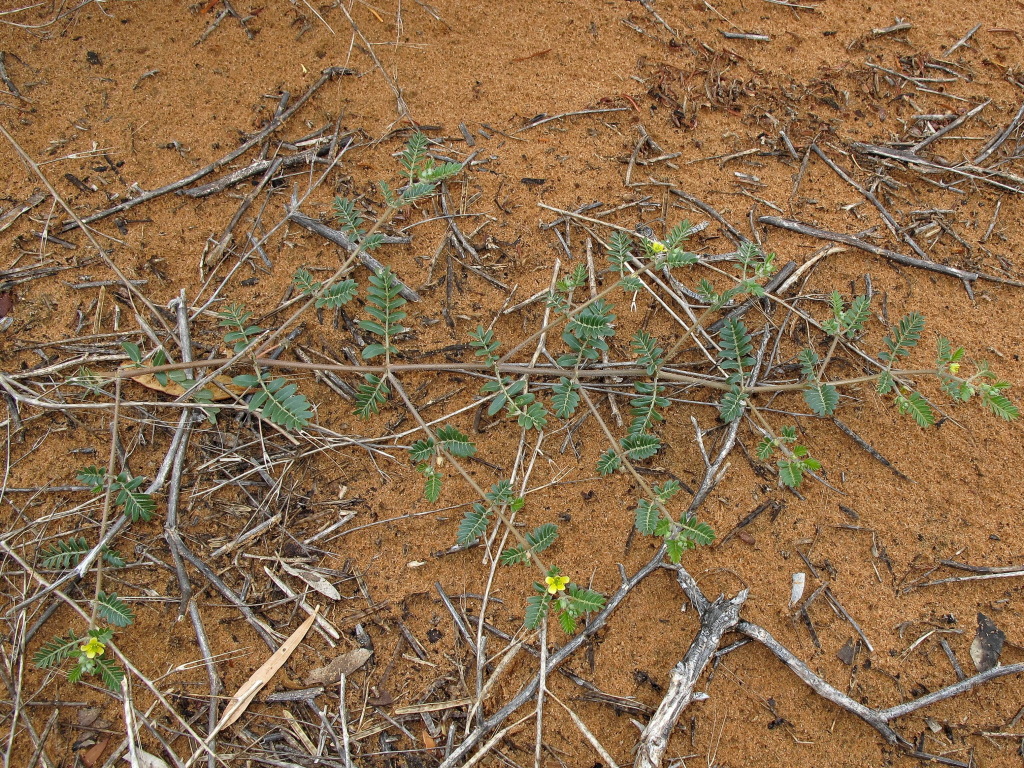Tribulus
Annual or short-lived perennial herbs, usually hairy; branches usually prostrate and elongated. Leaves opposite or alternate by abortion, paripinnate with 3–12 pairs of entire leaflets; stipules herbaceous. Flowers bisexual, solitary, axillary, pedicellate; sepals 5, imbricate, free, caducous; petals 5, imbricate, caducous, yellow; stamens 10 (rarely fewer by abortion), the outer 5 opposite the petals, filaments filiform or subulate, lacking appendages, anthers basifixed; nectariferous glands 10, 5 between calyx and corolla, 5 between inner stamens and ovary; ovary 5-celled, 5-lobed, sessile, ovules 2–5 per cell (rarely 1 by abortion), style simple, cylindric, 5-ridged, deciduous, stigma terminal, pyramidal or globose. Fruit a schizocarp, separating into 5 (sometimes fewer by abortion) bony, indehiscent, usually spiny, sometimes winged mericarps; seeds without endosperm, separated by transverse or oblique septa that develop after fertilization.
About 25 species from temperate and tropical regions of Europe, Africa and Asia; 12 species in Australia, 1 possibly introduced (at least in part).
Jeanes, J.A. (1999). Zygophyllaceae. In: Walsh, N.G.; Entwisle, T.J., Flora of Victoria Vol. 4, Cornaceae to Asteraceae, pp. 198–207. Inkata Press, Melbourne.
 Spinning
Spinning


